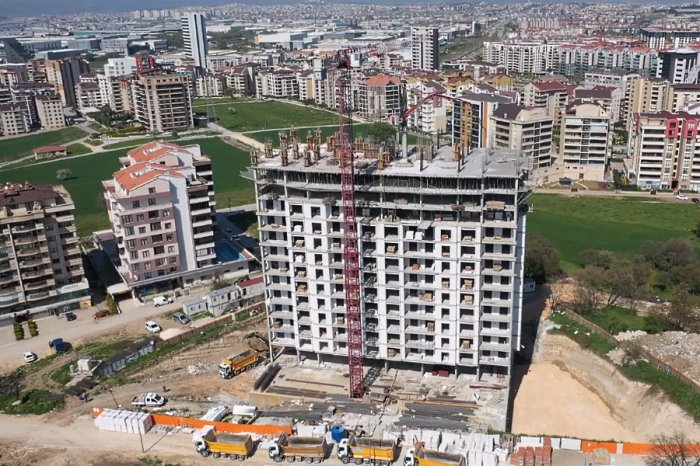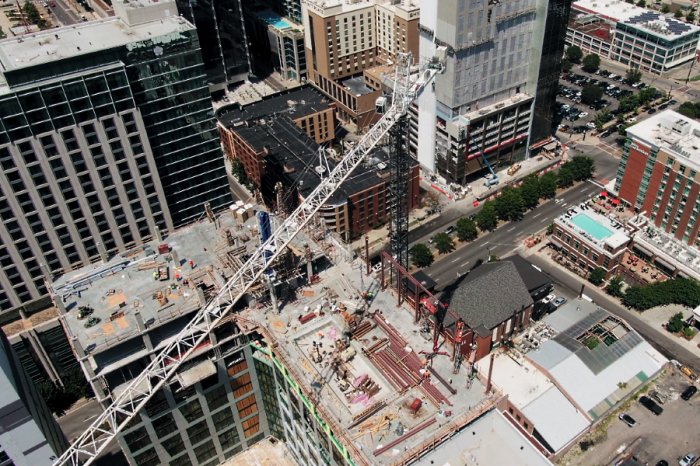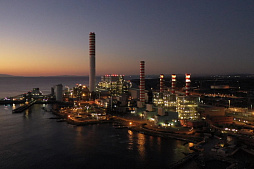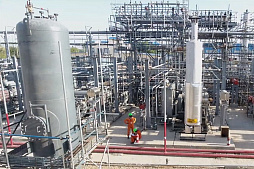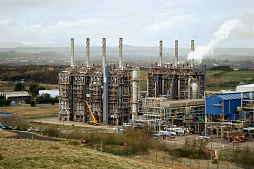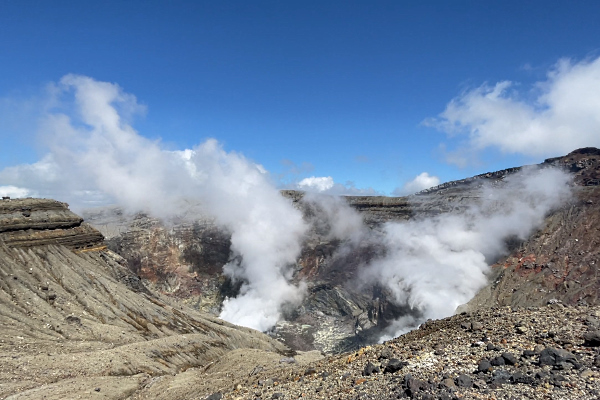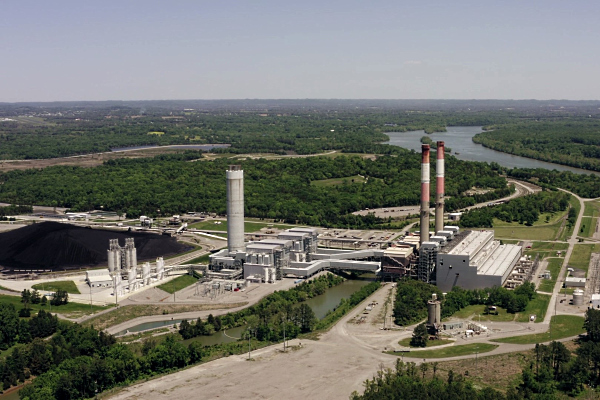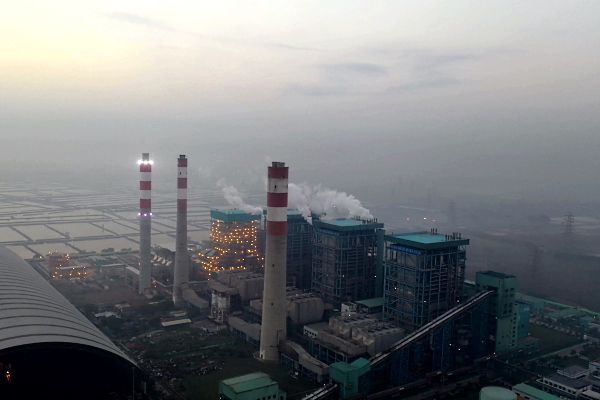To consider an application for financing, fill out the form and send it to us by e-mail along with the project brief, or contact our experts
Investments in geothermal projects help diversify the global energy mix, protect power grids from the instability of conventional renewable sources (wind and solar), and reduce energy costs.
Over the past decade, the turnover of this industry has exceeded 4 billion euros per year, and the global fleet of geothermal power plants has exceeded 500 facilities of various sizes. The heightened interest of investors in this area is driven by unlimited resources that are hidden in the depths of the planet.
Researchers believe it is the second largest source of renewable energy after solar radiation.
Unlike solar energy, investment in geothermal power plants is not limited to hot and temperate regions. Geothermal projects help ensure energy independence and sustainability in many countries where solar energy is not available in sufficient quantities.
Exploration and exploitation of geothermal resources creates new opportunities for intensive economic development of remote areas, growth of local production and employment.
To understand this, the reader just needs to look at the leading countries in geothermal energy, stretching from the equator to Northern Europe. These are the USA, the Philippines, Indonesia, Iceland, Turkey, Japan, New Zealand, Mexico, Italy and Kenya. The centers for the development of geothermal energy are currently Southeast Asia, Europe, as well as Latin and North America.
Table: Leading countries in terms of installed capacity of geothermal thermal power plants.
|
Installed capacity, MW
|
|||
| 2010 | 2015 | 2018 | |
| USA | 3086 | 3450 | 3676 |
| Indonesia | 1197 | 1340 | 2133 |
| Philippines | 1904 | 1870 | 1918 |
| Turkey | 82 | 397 | 1526 |
| New Zealand | 628 | 1005 | 1005 |
| Mexico | 958 | 1017 | 963 |
| Italy | 843 | 916 | 944 |
| Iceland | 575 | 665 | 755 |
| Kenya | 167 | 594 | 861 |
| Japan | 536 | 519 | 601 |
At the end of this article, we have published a short rating of the largest geothermal power plants in the world as of 2021.
We hope this information will be interesting and useful for investors.
Investments in geothermal energy are successfully complemented by wind parks and photovoltaic projects. Wind turbines are ineffective on a quiet day, and solar panel power is reduced at night and on cloudy days. Natural heat from underground is available for commercial use 24/7, regardless of weather conditions.
The development of the geothermal energy sector requires huge capital investments that cannot be obtained from public funds alone. This requires the active participation of the private sector.
Link Bridge Financial LTDA LBFL, an international company with rich experience in the energy sector, offers a wide range of financial solutions for the construction of geothermal power plants and district heating systems around the world.
For more than 20 years, we have been providing long-term financing and professional project management together with reputable partners, doing our best to achieve your business goals.
Fundamentals of geothermal energy for investors
Only four renewable energy sources, namely solar energy, wind energy, hydropower and thermal energy from the Earth's interior, have demonstrated economic efficiency and technical feasibility.Geothermal energy resources refer to thermal energy stored in the deep layers of the planet and extracted through hot geothermal fluids and rocks heated by magma.
Theoretical basis
Geothermal energy originates in the mantle, where heat is generated by the decay of radioactive elements.Due to the fact that a large amount of energy is released during the decay of unstable nuclei, high temperatures prevail in the center of the planet, reaching several thousand degrees.
However, the closer to the surface, the lower the temperature. The difference can reach up to 90 ° C per kilometer and even more. As a result of convection, the transferred heat energy accumulates in rocks and water deep under the earth's crust. This heat either accumulates at depth or is released outward in the form of geysers.
The effectiveness of the commercial use of geothermal systems depends on geological conditions, including volcanic activity or the penetration of rainwater into the rock. The so-called geothermal gradient, which reflects changes in the Earth's temperature with depth, plays a key role in assessing the area's thermal resources. For Germany or Poland, this figure can be around 30 ° C / km, while for Iceland it reaches an impressive 100 ° C / km.
The commercial use of geothermal energy is based on pumping hot water through wells several kilometers deep.
For this reason, it is the most complex and costly renewable energy source that requires advanced technology and a large initial investment.
However, the principle of operation of geothermal power plants is quite simple.
Geothermal sources, depending on their characteristics, can be used not only for generating electricity (high-temperature sources), but also for direct heat consumption (low-temperature sources). Modern systems usually pump out a heated liquid heat carrier (steam) from a well, and then return the cooled liquid back to repeat the heat cycle. This principle underlies the so-called enhanced geothermal system (EGS).
Low-temperature systems use hot water with a temperature of about 200-250 ° C, which is pumped to the surface and passes through heat exchangers, where it gives off some of the energy. Subsequently, this water is pumped back into the wells. The water circulating in the heat exchanger cycle is supplied to the end consumer for heating.
In the case of geothermal power plants (high temperature systems), the principle of operation is to use very hot steam supplied to the turbines under high pressure. Steam for generating electricity can have a temperature of up to 450-460 ° C and a pressure of up to 30 atmospheres. This is enough to drive powerful steam turbines and start generators.
A brief history of geothermal energy
The history of using natural hot springs began in ancient times, when geysers mainly served as places for the recreation and treatment of chronic diseases.One of the first mentions about the use of geothermal energy dates back to the Middle Ages (XIV century), when the French in some parts of the country heated houses with it.
Converting the Earth's heat into electrical energy has become possible relatively recently. In 1904, Italian inventors installed a generator in the town of Larderello that could power four incandescent light bulbs using geothermal energy. The first geothermal thermal power plant was built in the same town seven years later.
Much has changed over the past century, and technologies for using geothermal energy have advanced significantly. At the end of the 20th century, American researchers at the Los Alamos Laboratory were able to extract and use hot steam at temperatures over 450 degrees Fahrenheit, pumping water through dry rocks at a depth of 4 kilometers. As a result of this experiment, scientists have achieved stable operation of a 4 MW power plant.
The striking examples of the commercial success of geothermal power plants in recent years have revolutionized the perception of the industry and raised significant funds.
Compared to the 1980s, private investment in geothermal projects has increased several times, demonstrating the commercial attractiveness of this source.
Today, growing investments in geothermal energy are driving the development of methods, technologies and equipment for exploration of geothermal resources, drilling wells and energy conversion. Geothermal energy can be used more and more effectively not only in regions with numerous volcanoes and geysers, but almost everywhere.
During certain historical periods, investment in geothermal projects at the global level has decreased against the background of a temporary decline in oil prices.
But nowadays, the general trend towards the rejection of fossil fuels has become the key to the prosperity of this technology. A green economy gives a chance to underground energy.
Economic aspects and technologies
Despite the growth in funding and rapid technological progress, scientists have managed to solve far from all the problems of using thermal energy from the bowels of the Earth.For example, the competitiveness of geothermal energy systems strongly depends on the proximity of heat sources to the surface. Therefore, the construction sites for such facilities are still limited.
It is not surprising that most of the leading countries in this area (Iceland, Japan, Philippines, Mexico) are seismically active regions. In such areas, the natural conditions are optimal for investing in geothermal projects.
Geological surveys and detailed maps of areas with commercially available heat sources pose significant technical challenges. Once resources with the required parameters are found, their renewable nature and long lifespan provide a return on investment.
For example, the construction of a geothermal power plant with a condensing turbine is more expensive than a traditional combined cycle gas turbine power plant that burns natural gas. However, the unpredictable cost of hydrocarbons in the medium term negates this advantage.
Existing technologies offer various solutions for the exploitation of geothermal sources, which can be selected depending on the financial capabilities of the company and the requirements of potential energy consumers (domestic and industrial).
The utilization of geothermal energy depends on the source and the geothermal gradient. For example, 90% of the inhabitants of Iceland can use geothermal energy to heat their homes, but the availability of high-temperature sources for the production of electricity is limited in this country.
Advantages and disadvantages of geothermal projects
Geothermal energy is rightly considered a viable alternative to traditional heating methods by burning coal or gas.It is also a modern way of generating electricity that rivals solar or wind power.
What are the benefits of investing in geothermal heat projects?
One of the most important benefits is environmental safety and renewable energy. Thanks to this, geothermal energy in many countries enjoys strong support from the state and receives a number of privileges.
From a practical point of view, geothermal energy is a good choice. It does not depend on weather conditions, and the capacity of geothermal systems is evenly distributed throughout the year. During the operational phase, it is much easier for investors to predict how much energy will be received, because there are fewer unpredictable factors (wind speed, solar radiation).
In favorable geological conditions, geothermal energy can be used on a smaller scale, without the need to drill expensive wells 3-5 kilometers deep. At the level of an individual enterprise or community, investments in so-called shallow geothermal systems are gaining popularity.
However, renewable energy from the Earth's interior also has its drawbacks.
For example, geographic constraints that have not yet been overcome for the cost-effective use of geothermal systems anywhere in the world.
The second important disadvantage is the high cost of technology and equipment. The technology for extracting and converting the Earth's heat requires multimillion-dollar investments at the very first stages of the project, from geological research to drilling wells.
Some experts say geothermal energy is not fully renewable. This is partly true because the Earth's thermal resources are somewhat limited. It is believed that by taking hot water or steam and returning it cold, heat sources gradually cool down and in some way "drain".
Fortunately, the ratio of heat in the interior of the earth to the degree of utilization of geothermal energy does not give cause for concern in the coming decades.
Financing of geothermal energy projects
Raising capital for geothermal energy projects from private sources is more challenging than for conventional energy sources and for most other renewable energy technologies.This is especially true in the early stages of project development, especially for test drilling and thermal resource assessment, when the risk remains high and investment costs reach millions of euros.
To finance a geothermal power generation project, the proponent companies need to consider two key points. First, it is a significant capital investment. Secondly, it is a high risk that requires the development of effective and costly insurance schemes to cover geological and financial risks.
Any large project in the field of geothermal energy can be divided into several stages.
Table: stages of the geothermal project implementation.
| Project stages | Brief description |
| Planning (high risk) | Search and study of a geothermal source. Preliminary feasibility studies. Obtaining official permits. Engineering design. Search for sources of financing and insurance of the project. |
| Development of heat resources (high risk) | Well drilling and equipment installation. Conducting pumping tests. Resource assessment and final decision making. |
| Construction stage (medium risk) | Equipment purchase. Civil works. Delivery, installation, adjustment and testing of geothermal power plants. |
| Operation of the facility (low risk). | Professional operation, maintenance and repair. |
Professional operation, maintenance and repair.
Obviously, the terms of financing are slightly different at different stages of the project. Each stage is characterized by different financing options depending on the project risk and the expectations of potential investors.
During the trial drilling phase, the biggest obstacle to private financing for the project is exploration risk, which is considered high and difficult to assess. As a rule, no commercial loans are issued at this stage. The start of such a project is possible mainly for large companies that can finance drilling and exploration on their own.
At the stage of developing a source and completing drilling to extract heat resources, investors and financial institutions are more willing to finance the project.
Having received the first encouraging drilling results, providers of debt financing usually issue medium-term loans at 3-5% per annum.
Nevertheless, the remaining investment risks in many cases still prevent the use of project finance instruments (PF).
For this reason, companies continue to rely on internal financial resources.
Public sector support mechanisms, government grants or long-term loans from IFIs can be extremely beneficial for business at this stage.
When the heat source is well researched, the investment risks of large geothermal project become comparable to those of a traditional thermal power plant. At this stage, almost all forms of debt and equity financing used in the energy sector become available to companies.
If you need professional advice on the financial, organizational, legal and technical aspects of a geothermal project, please contact our team. Link Bridge Financial LTDA LBFL, in cooperation with leading financial institutions and engineering companies, will do everything for the success of your project.
Geothermal power plant construction cost
Geothermal projects are considered extremely expensive in terms of initial investment costs.In particular, the cost of the study of the area plus the drilling of wells and their arrangement takes about 60-80% of the total project budget.
The investment requirements to create a sustainable energy future are enormous. Even taking into account the inexpensive labor force in Africa, it costs 5-6 million euros to drill one well. These are just the first investments, followed by long-term studies of the hot water flow, the assessment of its resources and the installation of expensive equipment for power generation.
The average cost of geothermal projects consists of the following components:
• Geological survey of the area: 1-3 million euros.
• Drilling a well and estimating thermal resources: 10-20 million euros.
• Engineering design and technical documentation: 3-6 million euros.
• Construction of a geothermal power plant: 2-3 million euros per MW.
• Project risk insurance: 1-5 million euros.
The overall budget for a geothermal project is dominated by initial capital costs, which must be provided with adequate financial flows at the very beginning of the project.
Practical experience has shown that at the stage of project planning, initiators may need to invest in various items up to 10% of total costs.
A positive aspect of financing geothermal projects is the very low operating costs. Since geothermal power plants do not actually consume fuel, the main cost item in the process of operation is the maintenance of the power plant, repair, modernization and replacement of equipment.
Investment risks in geothermal energy
Every investment project in this area is initially subject to high risk.For this reason, few financial institutions are willing to provide funds for such projects, even with insurance. Geothermal power plants do not always reach the planned capacity due to unpredictable geological factors.
Investment risks in the geothermal energy sector include, but are not limited to:
• Risk of insufficient heating resources for successful operation.
• Financial risk due to high costs and long construction times (eg inflation, price fluctuations).
• The risk of stopping or disrupting the investment project implementation schedule.
• Risk of not having a permanent energy buyer and price risk.
• Legal and environmental risks.
• Operational risks.
The geothermal energy sector is associated with unique risks that are not found in other areas.
When developing a project for a new solar or wind park, an investor relatively accurately understands the level of solar radiation or wind speed in a particular area.
Drilling a geothermal well in a new unfamiliar area can be a waste of money and time. Moreover, drilling to a depth of 2 kilometers or more, which is practiced by some companies in search of heat, presents serious technical and environmental challenges at every stage of the project.
The placement of investment resources in geothermal projects with uncertain capacity carries risks.
If the results are not optimal, the geothermal power plant will be either too large (excessive concentration of investment resources) or too small (not reaching the planned capacity).
There are also serious technical risks associated with the hostile environment.
Chemical reactions with minerals at high temperatures turn water into a highly corrosive geothermal fluid that can destroy metal elements of drilling equipment, pipelines and even concrete well foundations. All this means additional costs.
Geothermal wells have a limited lifespan. Although engineering companies install highly efficient chilled water re-injection systems to extend the life of wells, these sources do not last forever.
As we can see, risk management of geothermal energy investments will require a professional approach, which can be provided by highly specialized groups or companies that have a wealth of practical experience in this area.
The largest geothermal power plants in the world
Currently, there are more than half a thousand large and small geothermal complexes in the world.Projects in this area are actively developing, following the global trend of abandoning fossil fuels in the energy sector. However, some projects stand out for their unique resources and huge investment.
The ranking of the largest geothermal thermal power plants in 2021 is given below:
# 1: The Geysers (California, USA)
The Geysers is considered the largest geothermal project in the world.Consisting of 18 thermal power plants and more than 370 active wells of various depths, this complex has an installed capacity of 1,590 MW and generates more than 6.5 TWh of renewable energy annually.
The development of this seismically active zone 115 kilometers from San Francisco began in the middle of the 19th century with the construction of a tourist center and a hotel. More than a hundred years passed before the Pacific Gas and Electric began operating the first geothermal power plant here in 1960. Today, on an area of up to 120 square kilometers, there are hundreds of wells that generate a fifth of the total renewable energy capacity in the state of California.
22 power units of different types and capacities installed at 18 thermal power plants operate with an average capacity factor of 53%, which is considered a very good indicator for facilities of this kind. The Geysers project continues to grow and evolve, being both a strategic energy source and a scientific testing ground.
# 2: Cerro Prieto (Mexico)
A state-owned geothermal project called Cerro Prieto Geothermal Power Station opened in 1973 in Baja California, Mexico.Starting as a very humble and technically primitive 75 MW facility, Cerro Prieto has grown to become one of the largest and most famous Geothermal Power Plants in the world.
The project currently consists of five phases Cerro Prieto I, II, III, IV and V with a total installed capacity of 820 MW, which were sequentially commissioned from 1973 to 2009. The operator's plans do not end there.
Regarding the future development of Cerro Prieto, the Federal Electricity Commission (CFE) recently confirmed plans to build a huge solar PV plant on the site of the geothermal complex. The new facility with an installed capacity of 350 MW will be located on an area of more than 1000 hectares. The estimated cost of the future project is US $ 340 million. This power plant extension will be operational between 2024 and 2029.
# 3: Olkaria (Kenya)
In 2021, Kenya commissioned an additional phase of the largest geothermal power plant, Olkaria VI, with an installed capacity of 86 MW, bringing the total installed capacity to almost 795 MW.This one of the most successful energy solutions is located 90 km from Nairobi, in an area where tectonic shifts are ripping apart the African continent and releasing colossal amounts of “free” geothermal energy for business and local economic development.
The project, which provides more than a quarter of Kenya's electricity generation, is operated by the KenGen energy company. Currently, the share of geothermal energy in the country's energy mix reaches 40%, which is an absolute record in the world and makes an important contribution to the country's sustainability.
Until now, the Olkaria geothermal power plant with the newly commissioned phase is considered the largest in Africa. Local scientists have come a long way from the first low-pressure wells in the 1950s to the first geothermal power plant in Africa, built in 1981. During this time, KenGen has drilled more than three hundred wells in Kenya, supplying hot steam to the surface to rotate multi-megawatt turbines.
This project, implemented in a developing country through consistent policies and multi-million dollar investments, clearly demonstrated the potential of a new energy source for the rest of the world.
# 4: Larderello (Italy)
The Larderello geothermal project dates back to 1913, when a geothermal power plant was built on this site for the first time in history.Built in the town of the same name in Central Italy, the facility with an installed capacity of 769 MW generates up to 10% of the world's geothermal energy production.
The geological conditions of Larderello are truly unique in southern Europe. In these parts, hot granite rocks occur unusually close to the surface of the earth, so engineers do not need to drill deep holes to efficiently exploit this thermal energy. Dry steam extracted from the Earth's interior in this area reaches a temperature of 395 ° C and is produced relatively easily.
Geothermal power plant Larderello, which has a history of more than 100 years, can be called one of the oldest investment projects in the field of geothermal energy in Italy. The facility supplies renewable energy to over 2 million Italian families, providing about a quarter of the region's energy needs.
# 5: Mak-Ban (Philippines)
The Mak-Ban geothermal power plant (short for Makiling-Banahaw) was built in the 1970s with the participation of Chevron Geothermal Philippine Holdings and a local power company.Today it is one of the largest facilities located in the vast geothermal field on the island of Luzon.
As of the end of the 2000s, more than a hundred wells were drilled here, and most of them are still in operation. The total installed capacity of this facility exceeds 450 MW.
Being a fairly old geothermal complex, Mak-Ban is constantly undergoing modernization with the participation of international companies. For example, in 2020-2021, the power plant received a set of new turbine components for power unit No. 1 manufactured by Mitsubishi Power.
The rating also includes a number of other small projects with an installed capacity of up to 400 MW, such as Hellisheidi Geothermal Plant (Iceland), Malitbog Geothermal Power Station (Philippines), Salton Sea (USA), etc.
Are you interested in long-term financing for a geothermal project?
Contact our finance team for advice.
Link Bridge Financial LTDA LBFL with its international partners offers financial and engineering services for energy projects around the world. Email us to learn more about our benefits.




